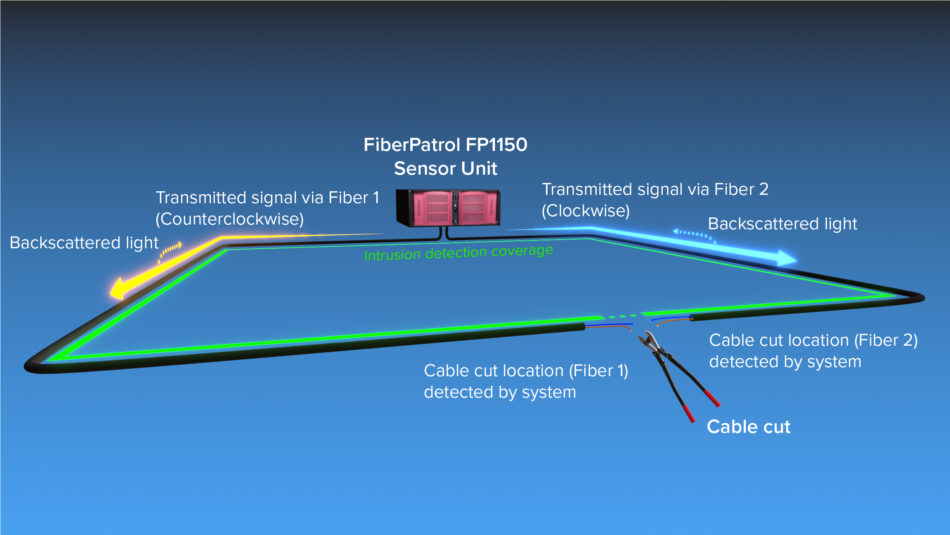Why Fiber Optic Safety Equipments Are the Future of Protection
The change to fiber optic protection systems notes a considerable innovation in the world of security, driven by their extraordinary data transmission capabilities and resilience to outside disturbances. As the landscape of protection develops together with arising modern technologies such as AI and IoT, the possibility for fiber optics to boost and redefine safety infrastructures ends up being significantly apparent.
Benefits of Fiber Optic Systems
Among the key benefits of fiber optic systems is their premium data transfer ability, which facilitates the transmission of large volumes of data over long distances without significant loss. This characteristic is especially advantageous for safety and security applications that require the constant surveillance and transfer of high-def video feeds, sensing unit data, and various other essential details. Optical fiber can suit the expanding needs of modern-day safety and security systems, making certain that information continues to be intact and reliable.
Additionally, fiber optic cords are less at risk to electromagnetic disturbance, which can be a considerable concern in settings with different electronic gadgets. This resistance boosts the integrity of the information being sent, consequently lessening the risk of data violations or system failures. Additionally, fiber optic systems are inherently a lot more safe and secure than conventional copper cords, as tapping into a fiber optic line without discovery is extremely hard.
The toughness of fiber optic wires likewise adds to their appeal. They are immune to environmental aspects such as moisture and temperature level fluctuations, minimizing maintenance prices and raising system longevity. Generally, these benefits placement fiber optic systems as a durable and efficient selection for modern-day safety frameworks, making certain trustworthy and safe and secure data transmission.
Improved Data Transmission Speed

The ability to transfer vast quantities of information rapidly helps with the seamless assimilation of high-definition video feeds and progressed analytics. Safety and security systems can now refine and evaluate details in real-time, boosting feedback times and situational understanding. Additionally, fiber optic connections support longer transmission ranges without deterioration of signal top quality, making them ideal for large security networks.
The enhanced rate of fiber optic systems not only enhances the performance of safety procedures yet also decreases latency. This is specifically essential in important situations where timely decision-making can prevent safety and security violations or alleviate possible threats. As organizations remain to focus on safety and security and efficiency, the demand for rapid and reputable data transmission will certainly strengthen fiber optic systems as a foundation of modern-day security framework.
Resistance to Interference
Fiber optic security systems regularly demonstrate remarkable resistance to electromagnetic disturbance, a vital advantage in atmospheres prone to digital noise. Unlike typical copper cables, which can be negatively impacted by magnetic fields, radio frequency interference, and other forms of electrical disturbance, fiber optic cable televisions utilize light to transmit data. This inherent residential or commercial property makes certain that the signals remain clear and unaltered, no matter surrounding electronic task.
The usage of glass or plastic fibers in fiber optic technology produces a barrier versus disturbance, enabling trusted information transmission also in difficult scenarios such as commercial facilities, urban areas with high digital web traffic, or locations near radio towers. This characteristic significantly reduces the possibility of signal deterioration or loss, making fiber optic systems particularly ideal for safety applications where integrity and accuracy of data are vital.
Additionally, this resistance to interference boosts the general efficiency and dependability of security systems, making certain that monitoring and alert systems operate flawlessly. In a globe where security is progressively endangered by innovative technologies, the resilience of fiber optic systems attracts attention as a crucial function, enhancing their condition as a vital element of modern-day safety and security infrastructure.
Cost-Effectiveness Gradually
Significant price savings can be attained gradually with the application of fiber optic security systems. While the initial financial investment may seem higher contrasted to standard copper-based systems, the lasting financial advantages emerge via minimized functional and upkeep costs (fiber security). Fiber optic cable televisions are naturally a lot more resilient and less at risk to ecological factors, which equates to lower replacement and repair costs over their life more tips here expectancy
Furthermore, fiber optic systems need much less power to operate, which further reduces energy costs. Enhanced data transmission abilities permit for less repeaters and amplifiers, lessening equipment investment and simplifying installation processes. The scalability of these systems also contributes to cost-effectiveness, as organizations can expand the original source their safety and security facilities without sustaining considerable additional expenses.
Another element to think about is the enhanced efficiency in monitoring and feedback abilities that optical fiber give. Improved real-time information transmission can bring about quicker incident feedback times, possibly mitigating losses and liabilities related to protection violations. In amount, the long-lasting advantages of fiber optic security systems not just validate the initial expenditure but also position them as a financially sensible choice for companies looking for robust protection options.

Future Technologies in Safety
Progressing modern technologies are set to change safety systems, incorporating expert system (AI) and equipment understanding to boost risk discovery and feedback abilities. These technologies will certainly allow protection systems to examine large amounts of information in real-time, recognizing patterns and anomalies that indicate potential threats. This proactive strategy will allow faster decision-making and much more efficient occurrence responses.
Additionally, the consolidation of the Net of Things (IoT) is leading the way for interconnected security tools, offering thorough surveillance and monitoring. Smart sensors can pass on details about environmental modifications, while automated alerts can inform safety and security employees immediately of questionable activities.
In addition, the development of biometric innovations will even more boost safety and security devices. Facial acknowledgment, fingerprint scanning, and retina identification are becoming much more advanced, offering layers of authentication that are hard to bypass.
Conclusion
Finally, fiber optic security systems stand for a considerable innovation in protection modern technology, providing unequaled information transmission speed, resistance to electro-magnetic disturbance, and lasting cost-effectiveness. As the need for sophisticated safety and security services remains to expand, the assimilation of optical fiber with a fantastic read emerging modern technologies such as AI, IoT, and biometrics will certainly even more improve safety infrastructures (fiber security). The mix of these innovations will certainly make sure a much more safe and responsive setting, solidifying fiber optics as a keystone of future safety and security systems
 Mason Gamble Then & Now!
Mason Gamble Then & Now! Michael Fishman Then & Now!
Michael Fishman Then & Now! Elisabeth Shue Then & Now!
Elisabeth Shue Then & Now! Christy Canyon Then & Now!
Christy Canyon Then & Now! Nicki Minaj Then & Now!
Nicki Minaj Then & Now!